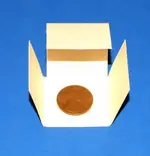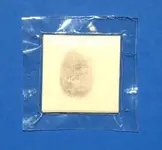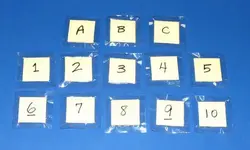So let's take a look at the statistics behind this test, starting with the questions I posted earlier:
There are 10 coins, randomly drawn from a batch of 40 coins, each with a different date from 1960 to 1999. The date on each coin is randomly guessed, knowing that it can be in the given date range and there are no duplicate dates.
What are the odds that 6 (or more) guesses will fall within +/- 3 years (or less) of the actual dates?
Warning: this is a very difficult problem, so here are a couple of simpler problems...
What are the odds that 6 (or more) guesses will be EXACT?
What are the odds that 1 guess will be within +/- 3 years?
Add'l info: The actual dates are not revealed until all guessing is done. It is assumed that all guesses will be unique.
Let's start with the easy problems first. In fact, let's start even easier:
Q1: If only 1 guess is made, what are the odds that it will be correct?
A1: That's pretty easy... 1-in-40, or 2.5%.
Q2: Next, in 10 guesses, what are the odds that
only 1 guess will be exact?
A2: Let's say the first coin is guessed correctly, and the other 9 incorrectly. The odds of this happening are 1/40 * (38/39)^9 = 1.98%. But you have 10 chances to get one right, so overall it's 19.8%.
Q3: In 10 guesses, what are the odds that
only 2 guesses will be exact?
A3: You would think that guessing any 2 particular coins coins correctly has odds of 1/40 * 1/39 * (37/38)^8 = 0.05%, and with 45 combinations to get 2 right, an overall 2.33%. But this is not quite right.
With this kind of test, there are multiple quirks to deal with because the results are only known at the very end. Let's say, ferinstance, that on the first selection 1970 is guessed incorrectly, but that 1970 is an actual date that is selected later on. Since 1970 was guessed earlier, it is now impossible to get this one correct.
This skews the odds slightly. However, the effect is not large, especially when the pool (40) is much larger than the number of selections (10). And calculations of the exact odds are very difficult*. So I will leave the exact calculations as an exercise to the reader, and use the approximated odds.
Q4: In 10 guesses, what are the odds that
only 6 guesses will be exact?
A4: 1/40 * 1/39 * 1/38 * 1/37 * 1/36 * 1/35 * (33/34)^4 = 0.000000032%, and with 210 combinations to get 6 right, an overall 0.0000067%.
One of the earlier questions was the odds that 6 (or more) guesses will be EXACT. For this, take A4 and add to it the odds for 7 correct guesses, 8 guesses, 9, and 10... it turns out they are exponentially smaller, so A4 is approximately the right answer.
Q5: What are the odds that 1 guess will be within +/- 3 years?
A5: The approximate answer is 7/40 * (32/39)^9 * 10 = 29.5%. Again, this is not exact, because the odds of a single success is not always 7/40. Ferinstance, 1970 has a correct range of 1967-1973 which is 7 years, but 1960 has a correct range of 1960-1963, which is only 4 years. But I'll avoid the excruciating calculations and go with the approximations, which are plenty close enough.
More later....
- Carl
*Very
very difficult. To the point where I would need to write a computer program, which I'm not going to do.




 An interesting test at any rate, I hope you fellows will decide to post the results here for us?
An interesting test at any rate, I hope you fellows will decide to post the results here for us? 


